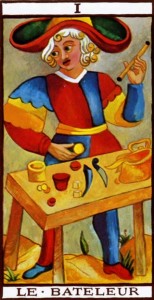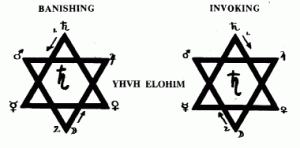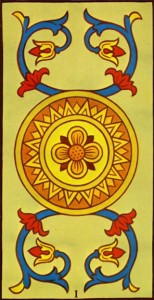One of the issues not discussed in Quests is the design of a game interface, both for basic functions like saving games and for gameplay interactions like casting spells or equipping items. The reason for the deliberate omission of interface considerations is that the book primarily discusses modding toolsets, which typically do not allow for significant modification of an existing game’s interface and certainly not the creation of a new interface.
Interfaces are crucial, though, when designing one’s own quest-based game, because an interface shapes the way that players can interact with the system of rules that constitutes the game. Here are some thoughts on the interface for Arcana Manor, which I’ll be putting into practice in the Torque Game Engine Advanced.
Main GUI
Accesible at the game’s beginning
The game’s title written in an appropriately arcane font
A brightly lit color scheme that looks like a tarot card from the Marseilles deck, with sharply angular buttons and a background colored like a mosaic or stained glass window

card from Marseilles deck
Start game option
Resume game option
Save game option
Load game option
Quit game option
Arcana Manor Magic Interface
Gestural (with mouse, xbox 360 controller, or maybe even Wiimote, since the Torque Game Engine Advance is cross-platform)
Trace sigils/glyphs/runes in the air with the index finger of a hand as well as magical weapons/items based on the tarot suits (wand, sword, cup, and disk). One model for this interface is the spell-casting system of Undying.

casting a spell in Undying
These sigils include geometrics sign (pentagrams and hexagrams)
The point of the sigil at which the player starts tracing it has an effect, because different points have varying elemental, planetary, and/or tarot correspondences.

hexagram attributions
Each sigil consists of particle effects and emitters, so they leave glowing trails of fire. The colors of these trails have varying magical effects.
Spells are powered-up via the number of wands, swords, cups, and disks collected by the player. These are displayed on the HUD interface as rows of each item, i.e. the standard mana-meter has four parts.

a tarot disk for the interface



